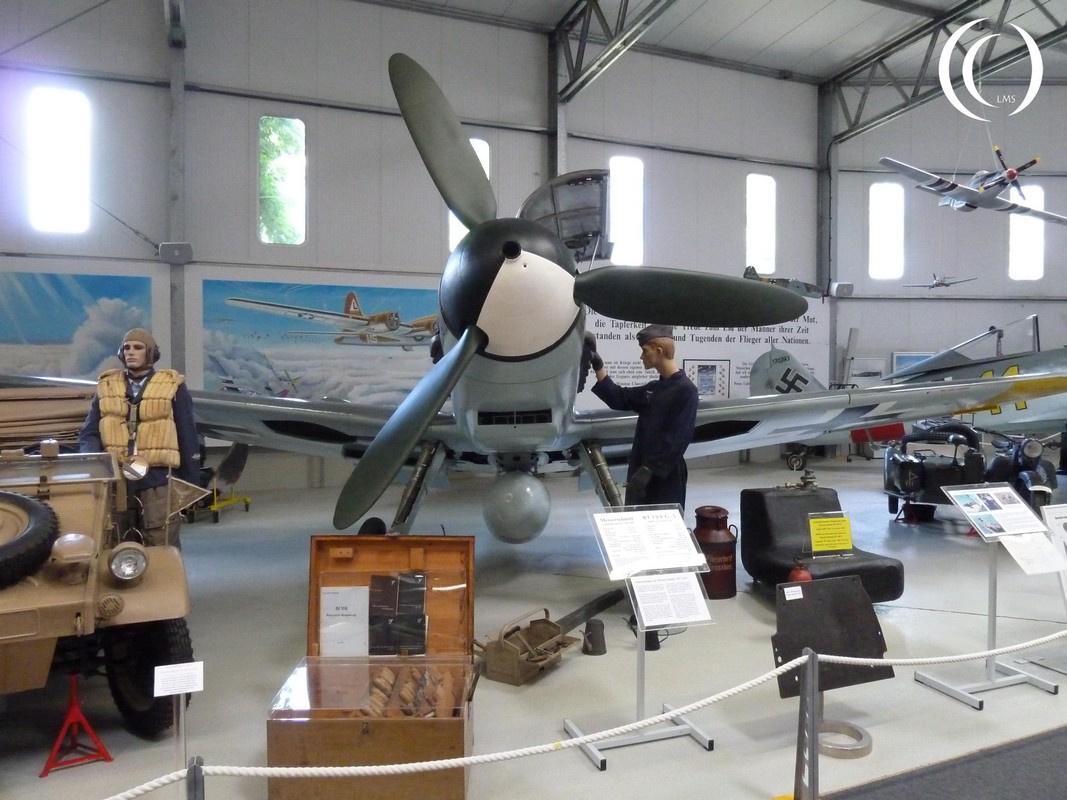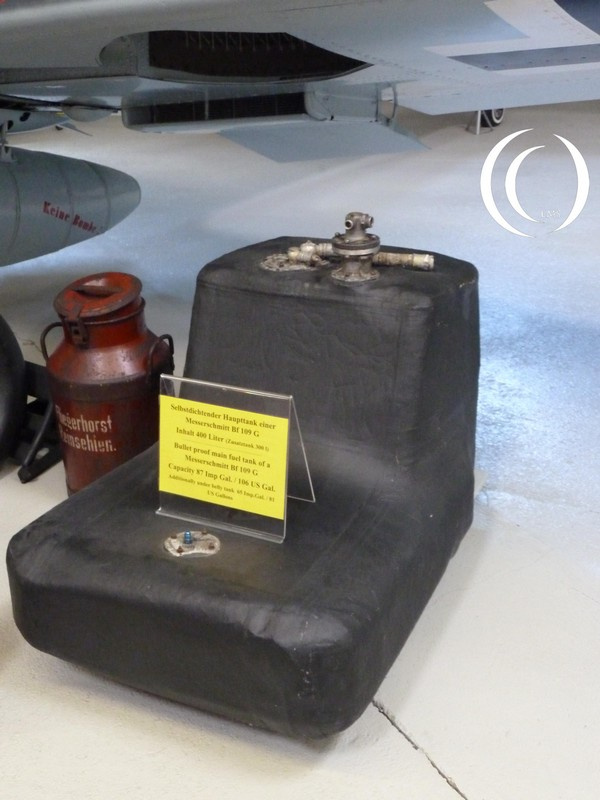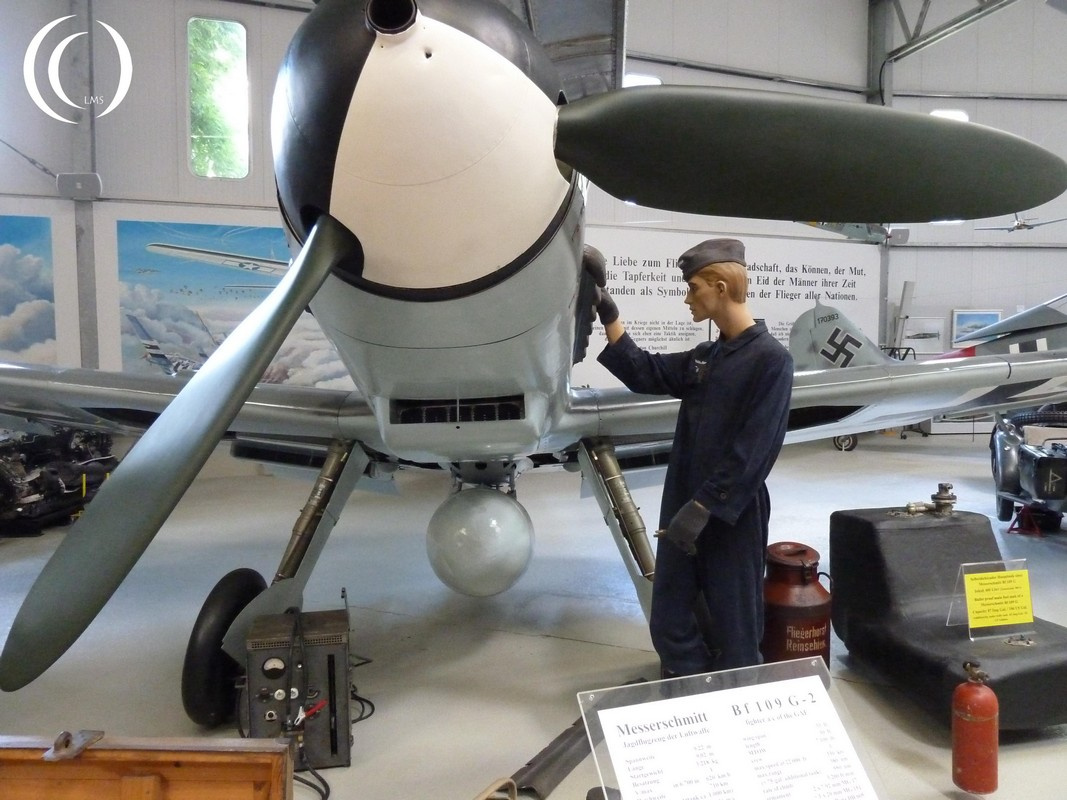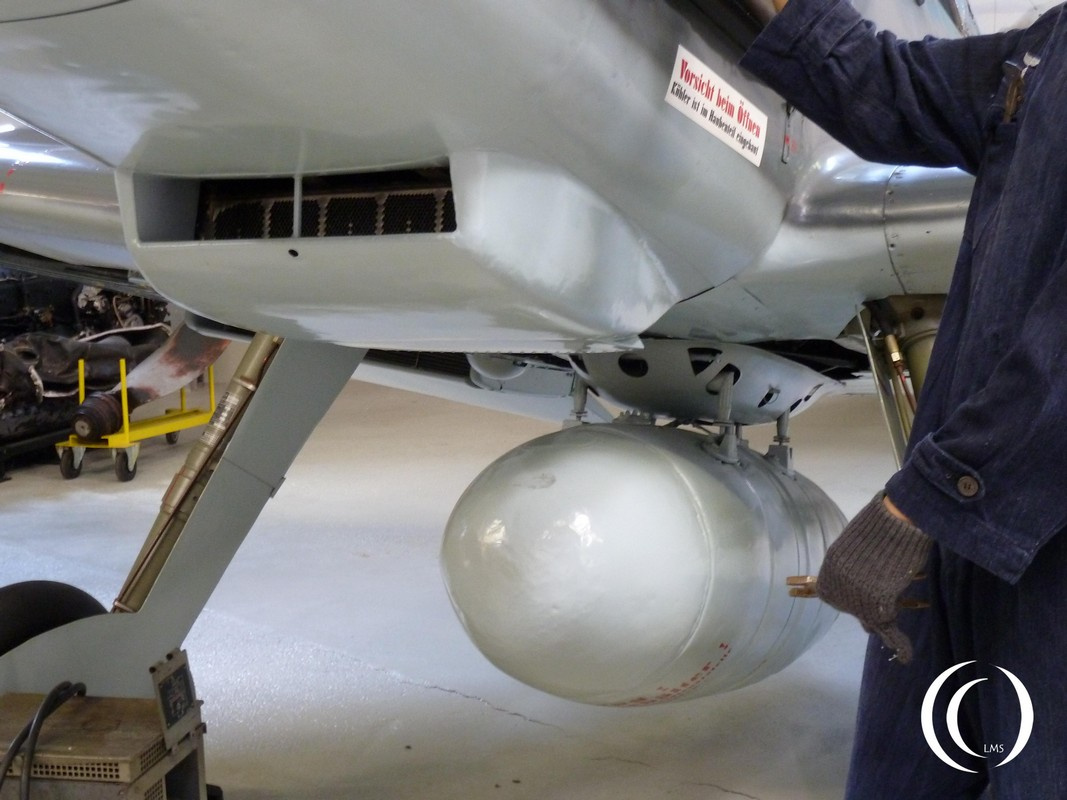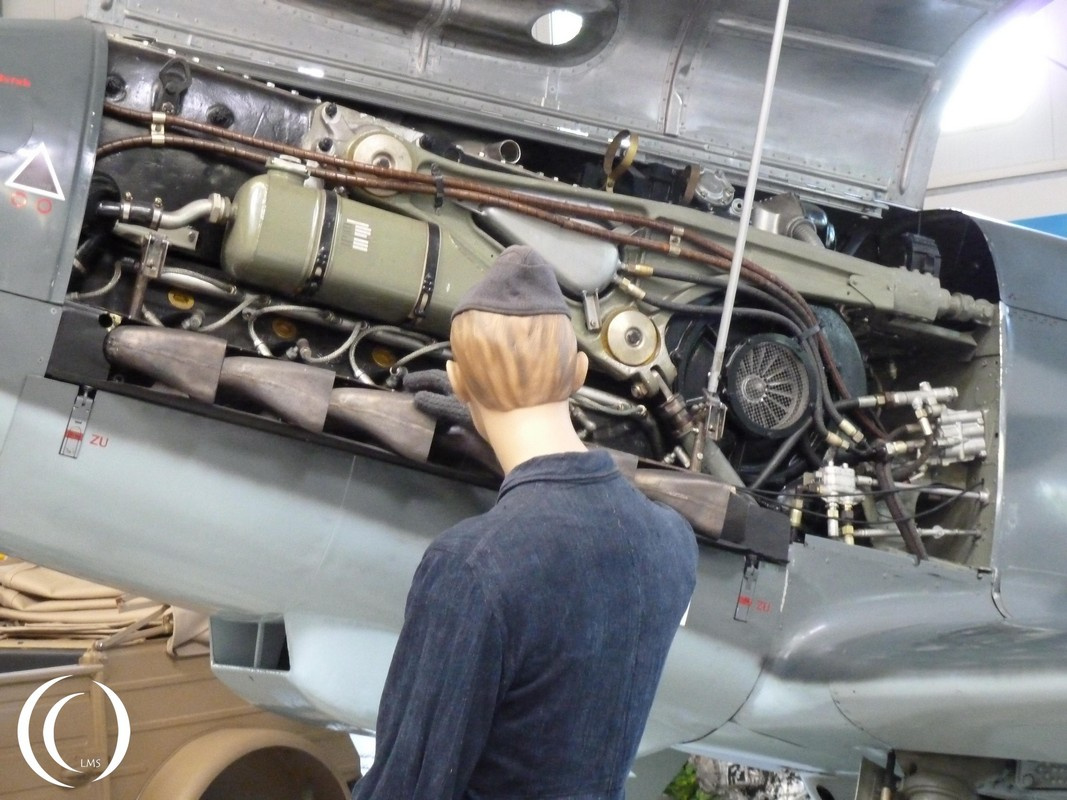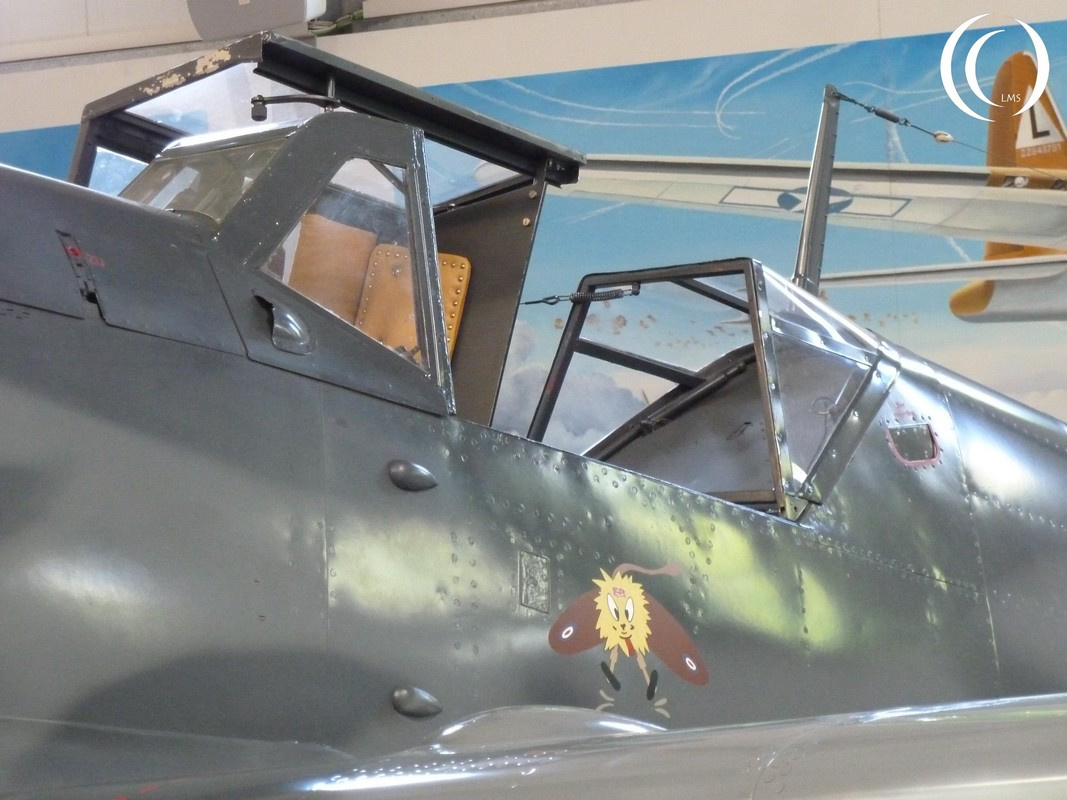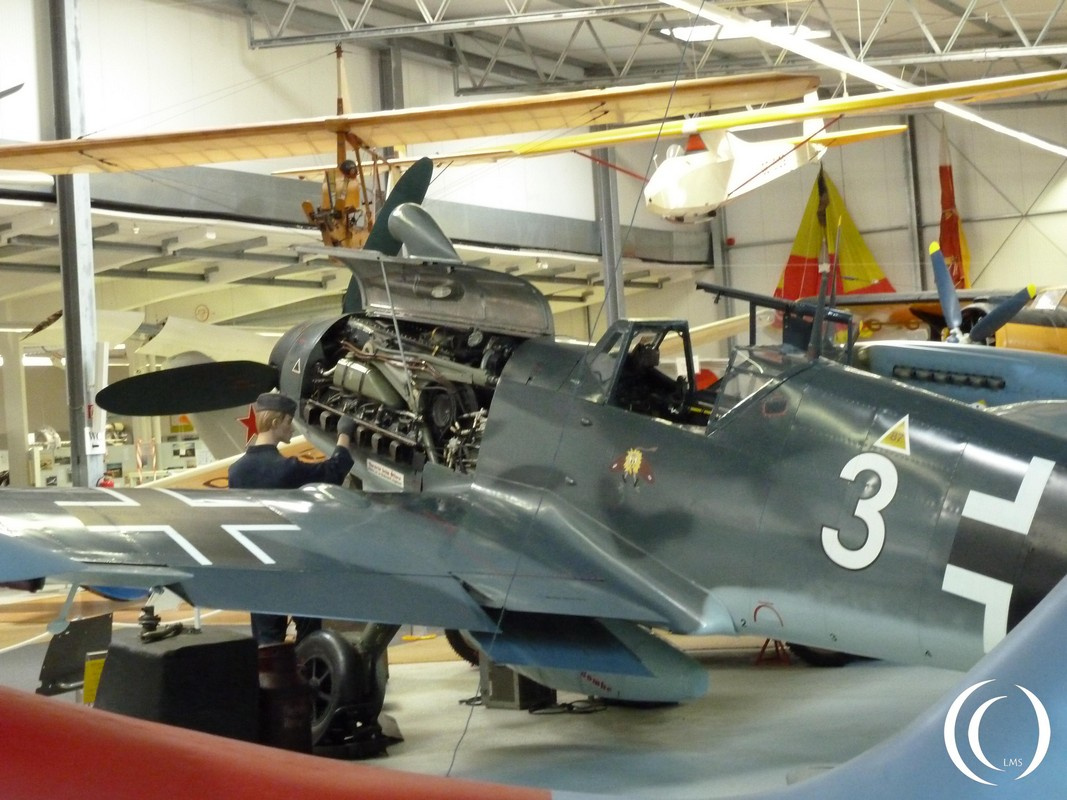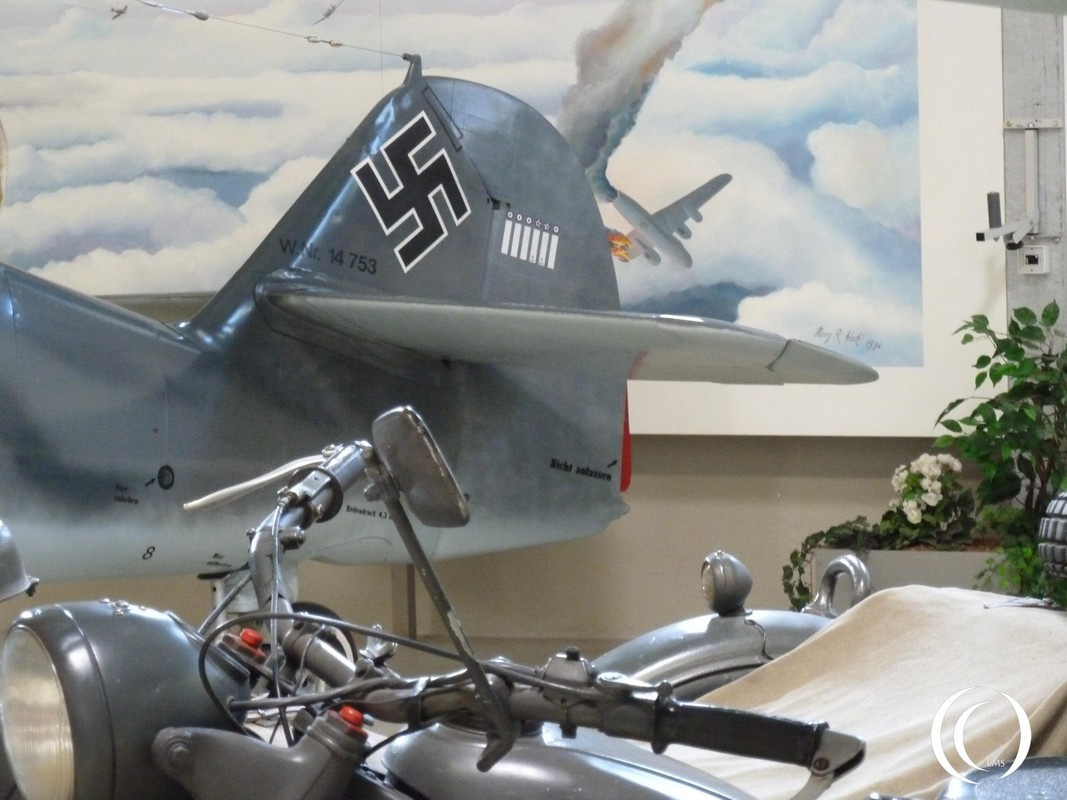Messerschmitt Bf 109 G-2 – 1./JG 27. This Bf 109 was part of Jagdgeschwader 27 and uses a Daimler-Benz DB 605 engine. Often reffered to as Me 109 by the Allied and as folk-designation.

Messerschmitt Bf 109 G-2
The Bf 109 G-2 was a German fighter aircraft produced by Messerschmitt during World War II, part of the Bf 109 G series, which was one of the most widely used and successful fighters in the conflict. The G-2 variant, introduced in 1942, was an improvement over earlier versions, designed to address the increasing demands of air combat as the war progressed.
Powered by the Daimler-Benz DB 605A engine, the Bf 109 G-2 had a maximum output of 1,475 horsepower, enabling it to reach a top speed of around 670 km/h (416 mph) at altitude. The aircraft had a range of 600 km (373 miles) and a service ceiling of approximately 11,000 meters (36,000 feet). This made the G-2 a formidable opponent in both interception and dogfighting scenarios.
The armament of the Bf 109 G-2 consisted of a 20 mm MG 151/20 cannon mounted in the nose, alongside two 7.92 mm MG 17 machine guns mounted above the engine. These provided a deadly combination of high-caliber firepower for engaging enemy bombers and fighters.
The Bf 109 G-2 was used extensively on both the Eastern and Western Fronts, proving effective against Allied bombers and other aircraft. Its design allowed for continued upgrades, contributing to its long operational history throughout the war.

